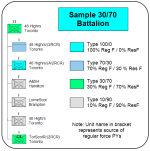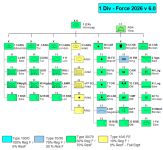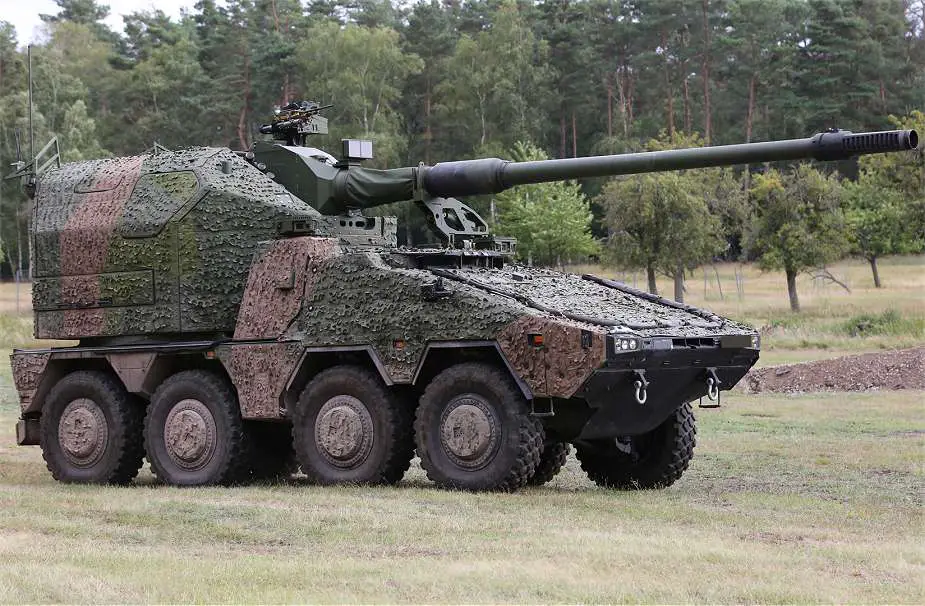You envision the expeditionary wing of the Army to be ARes ? Am I reading that right ?
Largely yes. Long answer follows.
I look at it this way.
1) personnel costs are the single biggest line item in our budget and where possible needs to be reduced through ResF service;
2) Our day-to-day homeland defence, and technical complexity rests mostly with the RCN and RCAF which dictates much of it needs to be RegF;
3) Expeditionary operations are more optional than homeland defence, are primarily land force in nature, and mostly focused on NATO now;
4) Our current CA ResF system is not fit for purpose and requires major restructuring most of which is possible within our current legislation and within current CA personnel strength and infrastructure which, IMHO, presently stands at the equivalent of two full divisions;
5) The CA already holds much of the equipment needed for approximately 1/2 to 2/3 of a mechanized division which is sufficient to fully preposition a brigade in Europe (some missing capabilities clearly need enhancing). I would suggest it could be manned by approximately 1/4 of the force on a full-time posted-in manning basis and 3/4 on a fly-over basis with frequent exercise basis (say 3 to 4 exercises per year). We now have the airlift to do that rapidly. IMHO we need to stop doing rotations - they will kill the CA;
6) One RegF brigade could be split up to a) constitute the "posted element" in Europe and b) form the RegF component of three hybrid "expeditionary) brigades in Canada each of which has approximately 25-30% RegF and 70-75% ResF manning and would, at first, hold approximately 25% of a brigade's equipment.
i) I would organize each hybrid battalion something like this and place many of them in urban areas:

ii) A 100% RegF company and a 70% RegF HQ and 30% RegF CS company provides both the proper training and career advancement needed by full-time career soldiers as well as the professional leadership for the whole bn;
iii) 3 X ResF companies plus 30% of a ResF bn HQ and 70% of a ResF CS company together with the RegF core, provide sufficient manpower to mobilize a full bn plus to leave a component behind to recruit and train replacements. The 10% RegF component of the 10/90 companies do not only provide the leadership and core positions within the 10/90 companies but also constitute a full-time training wing for the entire battalion providing everything from recruiting and recruit training to DP2 training for all NCMs - RegF and ResF - of the battalion;
iv) the equipment of the RegF company during the early stages of a reorganization provides the training equipment for the whole battalion. In a subsequent phase the structure of the CA provides a target goal for equipping the entire force. Potentially, once the "expeditionary division" is fully equipped, more brigades and even the divisional HQ could be prepositioned to a NATO command;
v) note that there is no CSS company. A designated CSS company for each unit in the brigade is held within the brigade's service battalion.
vi) The full "expeditionary division" could look like this - note that the division comes primarily from central and western Canada:

7) 2 Div (in Montreal) is organized quite differently. It fulfills more day-to-day and defence of Canada tasks and would be based on 2 RegF brigades reorganized as one light brigade in Petawawa which is mostly RegF and quick reaction oriented, two 30/70 hybrid brigades in Quebec and one battle group on each coast. All Ranger groups are allocated to this division and distributed amongst the brigades/battle groups. Only three bns remain which are close to fully RegF - two light battalions and one mech battalion - nine additional battalions (4 light and 5 mech) are 30/70 models as set out above.
The key point here is that one - largely ResF - division is allocated to a known continuous bde-sized "expeditionary" task in support of NATO. Less than 1/4 of the RegF in that division are posted into Europe with the prepositioned equipment for a whole brigade. Frequent short-duration exercises are held in Europe to exercise both the RegF and ResF personnel of that division and to provide a near continuous active presence there. (In effect I see the division hold no more than company-size exercises in Canada but conduct their bn and combined arms exercises (2-3 weeks) in Europe.)
Coupled with that is that the second division has a much higher ratio of RegF than the 1st division and while much of the force is targeted on Canada it is also available for
short duration expeditionary operations outside the country. These could be in support of UN peacekeeping or even NATO or Pacific operations. The three high-percentage RegF battalions form the quick reaction (Roto 0) elements of the force.
The whole structure is designed to make the ResF more competent and the basis for an expanded more credible army. The structure eliminates the four RegF and ten ResF CBGs and five divisional HQs for two divisions made up of 7 manoeuvre bdes, 3 CS bdes and 2 CSS bdes, all deployable. Finally it forms a basis around which an equipment plan can be designed.
So the short answer is that the permanent NATO-related expeditionary force is largely reservist operating on a contingency fly-over basis but that the majority of the RegF will also fulfill short-term expeditionary tasks both in NATO and elsewhere.
From an artillery point of view - this is after all, a C3 replacement thread - I see almost all artillery - save AD - as 30/70 units trained almost exclusively to support expeditionary operations. In my mind I see eight artillery regiments in total - four x SP 155mm CS (of which one is unmanned (except for maintainers) prepositioned equipment); three x wheeled 155mm CS; one LRPR GS; and one 70/30 AD. Incidentally, I see each CS regiment with five batteries - three CS gun batteries, one Tac battery with FOOs, JTACs, and STA; and one GS battery with medium range launcher battery with precision OWUAV systems. Once again, each regiment's CSS battery is held at the arty bde service bn.
One last comment and then I'll stop. It's about time that we stopped calling armoured, artillery, engineer, signals etc units "regiment." Let's standardize on the term "battalion" for all units and use the term "regiment" as an administrative term for affiliated groups of battalions.





